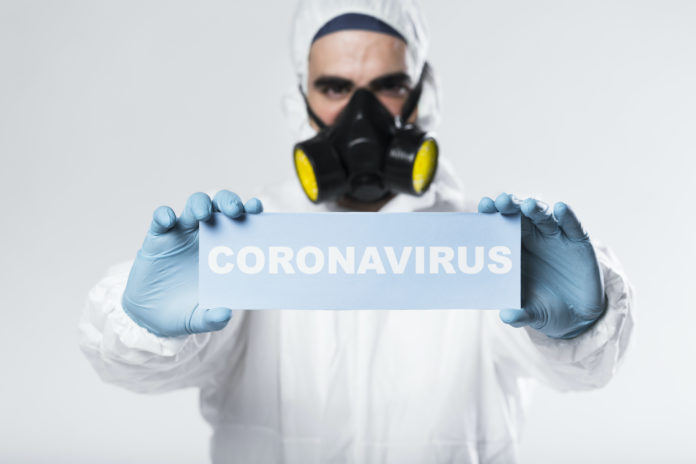By Building Today writer Jo Bailey
Like many industries in New Zealand, the construction sector has been hit hard by the Covid-19 pandemic, with tools downed and building sites locked up and deserted as the country headed into lockdown.
Canterbury Master Builders Association president Ivan Stanicich says even once the lockdown is lifted and builders and contractors can return to their work sites, there will be a “new normal” everyone will have to adapt to.
“We can’t think we’re going to drop from Level 4 restrictions to Level 0 overnight, and that everything will return to normal. Far from it. The restrictions and monitoring at various levels and the risks of Covid-19 could be with us for some time,” Stanicich says.
“Having strict health, hygiene and safety practices on our work sites is going to be vitally important to ensure we are protecting ourselves, our employees, our contractors and our clients.”
Best practice guidelines
Stanicich has spoken to several industry colleagues, and has sought advice from HazardCo and SiteSafe to come up with a list of best practice guidelines all company owners and tradespeople should follow once they are able to return to the work site. They are:
• Stay away: If you are sick do not enter your workplace until you are well, or have self-isolated for 14 days.
• Everyone must register: Anyone coming on to the building site must register at the site entry. This enables the risk to be managed, and if someone does fall ill, the documentation is already in place to trace their contacts.
Names can be collected on paper, or through a HazardCo or SiteSafe app on a device at the site entry, which allows people to sign in and out using a QR code.
“Commercial sites are already very good at this, but the residential building sector is nowhere near where it should be. We need to ensure there is a much higher level of recording when we go back to work,” Stanicich says.
• Better communication: A toolbox meeting at the start of the day can provide a clear outline of the day’s plans, who is working on-site, how risks will be managed, how safe working distances will be maximised, what the expected hygiene practices are, and deciding who might need PPE gear.
HazardCo and SiteSafe apps can record details of toolbox meetings, and even save a photo of the team to show who attended each day.
• Physical distancing: It is important that physical interaction guidelines are put in place to ensure tradespeople continue to maintain the two-metre physical distancing rule once back on the work site.
When carrying out tasks such as installing a vanity, which requires closer contact, wear PPE equipment such as masks and disposable gloves.
Split shifts, staggered meal breaks
Site managers could also consider running split shifts, staggered meal breaks, and flexible working arrangements, while ensuring employees use separate vehicles. All visitors to the site should be made aware of the physical interaction guidelines.
• Don’t share tools: Try not to share tools. However, if this is necessary, wipe the tools down with antiseptic wipes between uses, or use disposable gloves when using the tools, which can be discarded after use.
• Hand washing: Regular, thorough hand washing and drying is proven to be one of the best defences against Covid-19. While building companies should implement a good hygiene plan, it is up to the individual tradespeople to take responsibility for their personal hygiene and supplies, Stanicich says.
“Individuals should bring their own soap, hand sanitiser, paper towels and a bucket or bowl to work. If there is no water on site, they should bring bottled water for hand washing instead.
“It goes without saying that sanitising or washing the hands before eating food or after using the site Portaloo is critical too.”
• Other basic hygiene rules: Continue to follow protocols such as sneezing or coughing into your elbow or a tissue, washing your hands straight away, and not touching your face.
Also frequently wipe down high touch work surfaces such as door and window handles, taps and benches.
Designated delivery areas
• Contactless deliveries: Hiab operators making large deliveries who need to come into the workspace must be registered. A designated area on the worksite should be set aside for smaller courier parcels.
Anyone collecting a smaller parcel should wear disposable gloves, open it in an appropriate place, dispose of the packaging in the site skip, discard the gloves and wash their hands.
• Going home: Have some hand sanitiser in your vehicle to use as soon as you leave the work site. Have a shower as soon as you get home, and put at least the outer layer of your work clothes through the washing machine.
If tradespeople listen to the science and health advice, and make a few sustainable changes to manage the ongoing risk of Covid-19, this will help to ensure everyone goes home from work safe and healthy, Stanicich says.
“These changes start at the top, but just like during the lockdown, everybody needs to play their part. As well as looking after ourselves and our workmates onsite, if we follow these protocols, we’re ensuring our families and friends stay safe too.”




